|
Past and Present Pubs
Until more recent times most people’s
social activities centred around the public house, of which
Walsall had many.
Since the early 18th century around 600
public houses have served the local community, although only
a small number survive today.
Below is a list of
Walsall’s past and present pubs, but because this is very
large I have divided the town into several areas.
If anyone
can add to the list, or make corrections, please
send me an
email. |
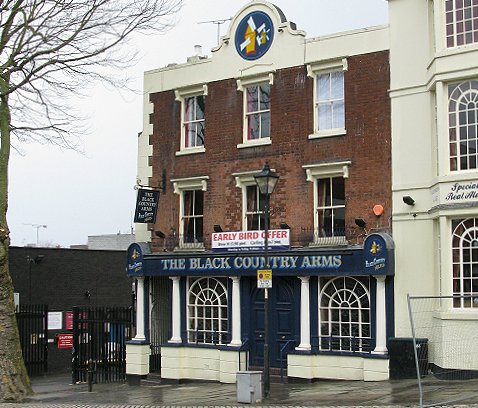
The Black Country Arms in High Street. |

The Black Country
Arms, as it was in the early 1900s. The
left-hand side where the front entrance is
today was a shop, which was run in 1896 by
Finlay Brothers as a drapers store. By the
early 1900s it was Royal Reliance Cycles
shop that sold cycle accessories,
gramophones and records. The top floor was
later removed. The original pub was in
between the shop and the Guildhall, which it
was part of. On the roof is the old market
bell that was rung at the end of each market
day to signal the end of trading. At various
times in the 19th century it was called The
Dragon, The Green Dragon and the Royal Oak
and Dragon. In 1900 it became the Dragon
Hotel. In the 1970s it was rebuilt by
Wolverhampton and Dudley Breweries and
reopened in 1976. It became the Black
Country Arms in November 2008. On the 13th
September, 1982 it was grade II listed
|
|
A list of the town's pubs: |
| Select and click
on the area of your choice to view a list of
past and present pubs. |
|
| The Evolution of the
public house The British public house can be
traced back to the Roman tavern or tabernae, and later
the Anglo-Saxon alehouse, which became so popular that
in 965 King Edgar decreed that each village should have
no more than one alehouse. As long ago as 1393, King
Richard II compelled all landlords to erect a sign
outside their premises, which allowed people to identify
the alehouse by the picture on the sign, and also make
it obvious to the borough ale tasters, who inspected,
and tasted the ale.
Pub licensing began in 1552 when
magistrates were given the power to license alehouses,
due to concerns about drunkenness and public disorder.
In the 18th century, gin replaced ale as the most
popular drink, after the Dutch brought it here in the
late 1680s. It was cheaper, more alcoholic, and readily
available. Drunkenness became commonplace, and on
several occasions the government introduced legislation
in an attempt to reduce the problem. It was in this
atmosphere that the modem public house was born.
|
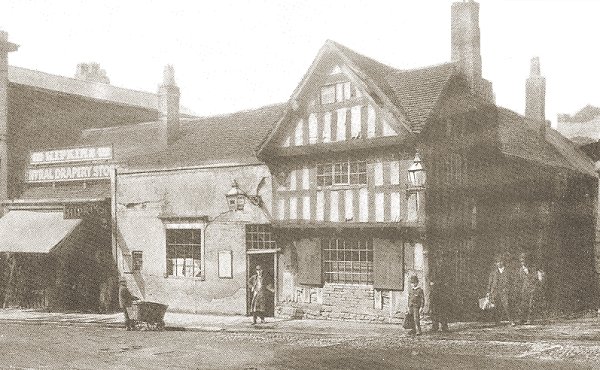 |
The Woolpack Inn which stood
in Digbeth. From an old
postcard. |
|
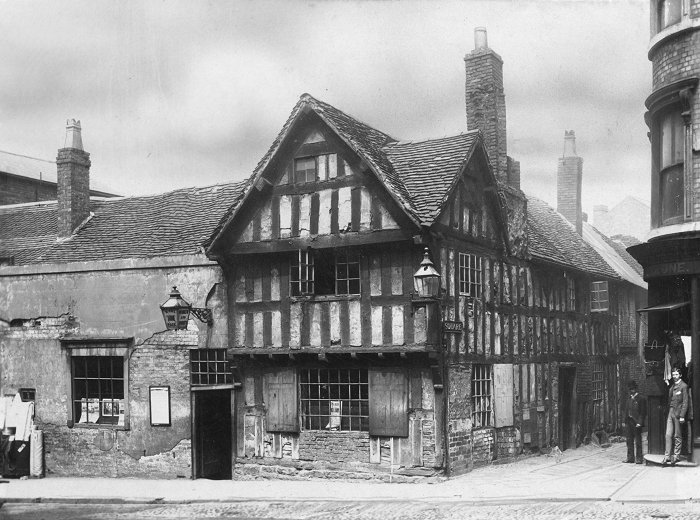
Another view of the Woolpack. |
|
The 1830 Beer House Act
Beer was considered to be a
harmless, nutritious alternative to gin, the consumption
of which should be actively encouraged. This idea led to
the Passing of the 1830 Beer House Act that introduced
new and radical changes in the law. It allowed any
householder and tax payer to obtain a license to sell
beer on their premises, in exchange for a 2 guinea
licence fee. Licensees were not allowed to sell spirits
or fortified wines. Anyone doing so would be closed
down, and heavily fined.
The new legislation led to a rapid
rise in the number of public houses, and the
introduction of a new class of licensed premises, the
beer house. Beer houses were family homes, in which beer
was usually sold in the front room, and dispensed from a
jug, or directly from the barrel. Often the room was
simply furnished with bare floorboards, wooden benches,
and trestle tables. By the 1850s beerhouses greatly
outnumbered pubs.
Some of the early beer houses
carried names, just like pubs. They included the Why Not
in Western Street, Pleck, the White Rose in Lower
Rushall Street, the Saracen’s Head in Stafford Street,
and The Wheel in Catshill Road, Walsall Wood. Some of
the more successful beer houses eventually became pubs,
such as the Walsall Arms in Bank Street, and the Turf
Tavern in Wolverhampton Road, Bloxwich.
|
| The White Hart in
Caldmore Green. From an
old postcard. |
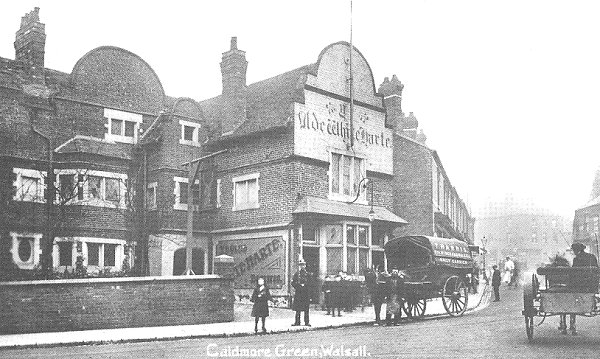 |
|
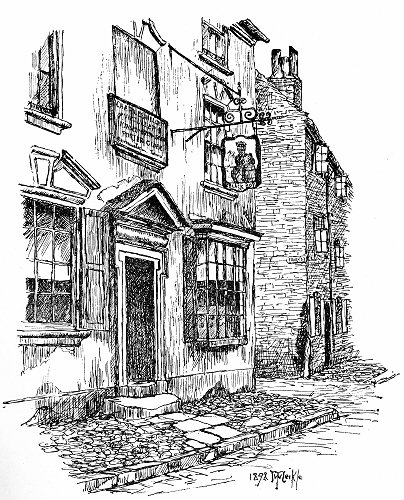
The Black Boy, New Street. From
the 1899 Walsall Red Book. |
Beer houses flourished until the
introduction of the Wine and Beer House Act of 1869,
which prevented the opening of new beer houses, and
tightened local magistrates' control of the industry. By
the early years of the 20th century they had all gone.
Pubs in the 18th century included
The Woolpack Inn in Digbeth, The Vine in Lower Hall
Lane, and the Black Country Arms in High Street which was
originally part of the Guild Hall, and later called the
Green Dragon.
Many of the early pubs were coaching inns,
so called because horse-drawn coaches or omnibuses would
stop there for a change of horses, and to pick-up, and
drop-off passengers, and sometimes mail.
Travellers
would be provided with food, refreshments, and often
accommodation. Stables were provided for the horses.
|
|
Coaching Inns relied on the regular
coaching traffic, which in turn relied upon the state of
the roads. In the 18th century, road improvements and
maintenance were carried out under the terms of Turnpike
Acts, which allowed authorised Trustees, usually local
businessmen, to collect tolls for 21 years in return for
repairing a particular road, or section of a road. The
tolls were collected at gates or barriers which were
known as turnpikes. The New Inn in Park Street opened in
1774 to take advantage of the newly turnpiked roads to
Wolverhampton, Lichfield and Churchbridge.
Licensees of coaching Inns often
did what they could to assist in improving local roads
in order to increase the number of coaches calling at
their establishment. In 1784, Mr. Fletcher, the licensee
of the George Hotel, obtained an Act of Parliament for
the building of the road from Walsall to Stafford, and
the widening of the Birmingham Road as far as Hampstead
Bridge.
Horse-drawn coaches and omnibuses quickly disappeared
after the coming of the railways, and the appearance of
trams, so coaching inns had to evolve or disappear.
|
 |
The George Hotel on The
Bridge. From an old
postcard. |
|
Many landlords brewed their own
beer, and sometimes supplied it to other pubs and beer
houses. Some of the more successful licensees became
extremely affluent, and invested their money in land and
property.
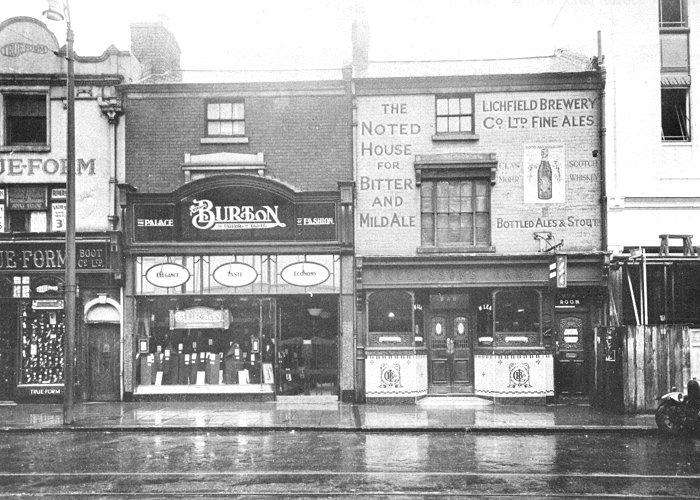
The Freemasons Arms in Park Street
in the early 1930s.
The Evolution of the Traditional
English Pub
The traditional English pub evolved
into several separate rooms, each with its own purpose.
The bar, with a counter, was copied from gin houses,
where the idea was to serve customers quickly, and keep
an eye on them. The saloon bar, or lounge, appeared in
the latter part of the 18th century, as a comfortable,
carpeted, and well furnished room with an admission fee,
or higher priced drinks. It catered for more affluent
people. Often entertainment would be provided, and
drinks were served at the table.
The tap room, or public bar, was
developed for the working classes. It had simple wooden
bench seats, cheap drink, and bare floorboards, or
tiles, that were often covered in sawdust to absorb
spillages, and spit.
Another room, the snug, sometimes
called the smoke room, was a small, private room where
people could drink without being observed. The windows
were made of frosted glass, and the room had a separate
entrance to the bar, so that people could enter and
leave without being seen. There was usually access to a
separate section of the bar, where a higher price would
be paid for drinks. The snug was often used by ladies,
at a time when the pub was perceived to be for men only,
and also by courting couples, who liked their privacy.
There was often an off licence,
where beer, wine, or spirits could be purchased for home
consumption. It was a small room with a counter, or
often just an open window facing the back of the bar,
through which people were served. Customers, including
children, sent on an errand by their parents, could take
bottles to be filled with beer. A paper seal would often
be stuck over the stopper to ensure that the children
didn't sample the contents.
|
| The derelict Market Tavern.
As seen from the Black Country
Arms. |
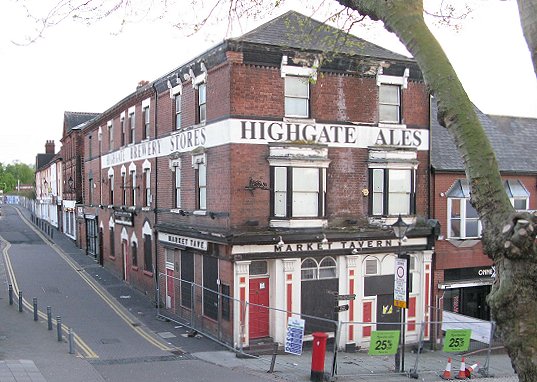 |
|
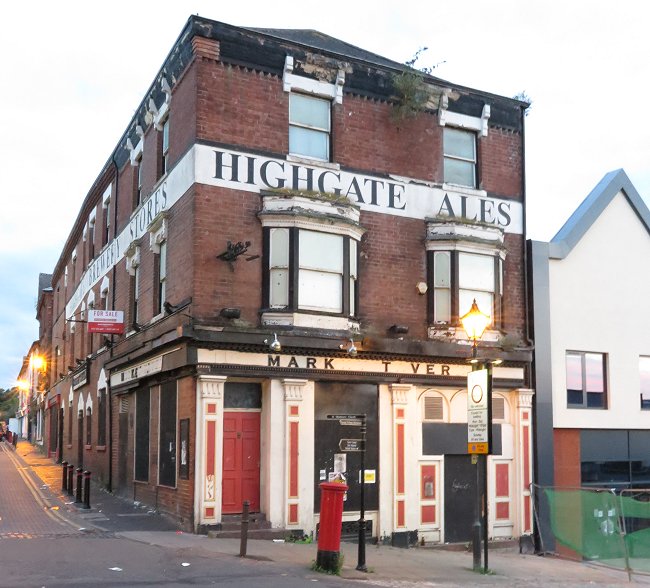
The Market Tavern in
July 2017. |
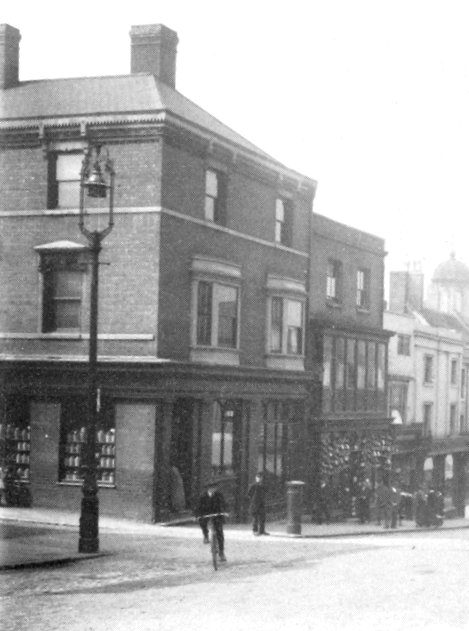 |
The Market Tavern in the early 1900s
when it was Paine's Wine Vaults, run by
Walter Paine. The shop sold wine and
spirits. It was originally called The
Castle pub, which was acquired by Walter
Paine in the late 1860s.
Paine's Wine Vaults closed
on the
11th December, 1977 and reopened as a
pub in 1983.
In July 1996 it became the Punch and
Judy, then in 2000 the name was changed
to Brewery Stores.
It closed in 2007 and reopened as the
Market Tavern in 2008. A year later it
closed. |
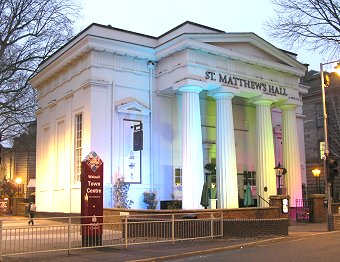 |
|
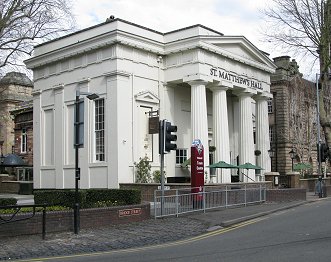 |
|
Two
views of St. Matthew's Hall in Lichfield Street. |
|
|
The Public House Today
Sadly many pubs have disappeared
within the last few years, and still continue to do so
at an alarming rate. The pub was used mainly by working
class communities, and factory workers. Most of the
factories are now gone, and working class communities
have largely disappeared. Worries are expressed about
binge drinking amongst the young, and alcohol related
crime. Many youngsters prefer drinking in clubs which
often open throughout the night. People now drink at
home, taking advantage of the cheap beer, wines and
spirits that can be found in the local supermarket. The
smoking ban, and tougher drink-drive regulations have
also had an impact, as has the downturn in the economy.
|
|
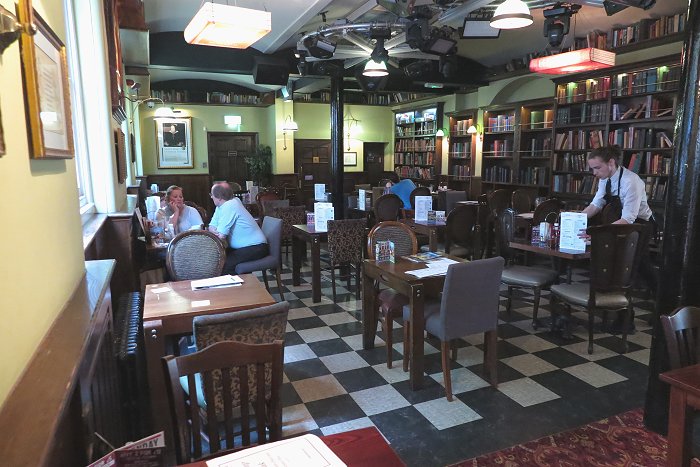
Part of the interior of St.
Matthew's Hall in Lichfield Street. |
|
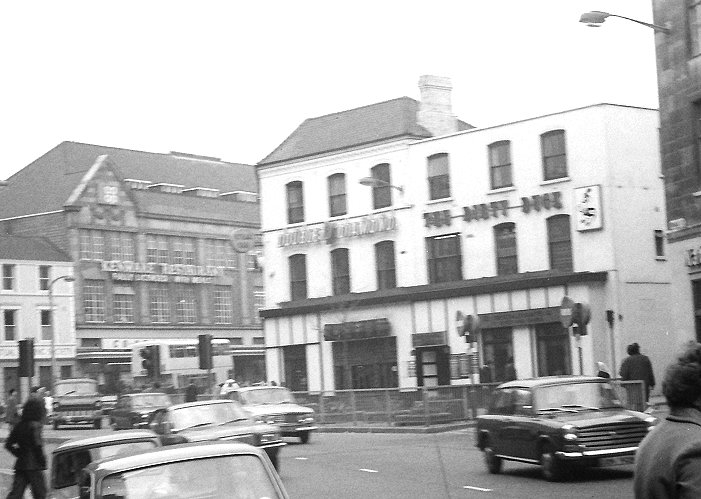
The Dirty Duck in Bridge
Street, as seen in 1972. Courtesy of Will
Parker. |
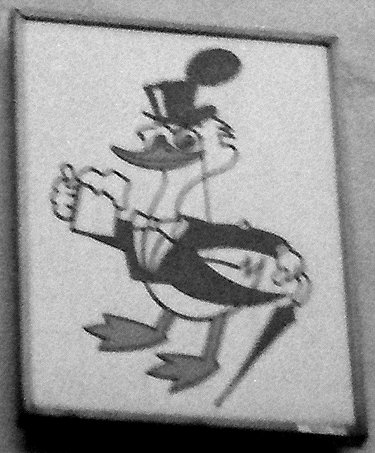
The sign on the front wall
of The Dirty Duck. Courtesy of Will Parker. |
The Dirty Duck was very popular with local
sixth formers and so one of its nicknames was
'The sixth form common room'. It was
originally called the Stork Hotel and became The
Dirty Duck in the early 1960s.
It then became the Black Swan and finally
Studio 45.
It closed in January 2007. |
|
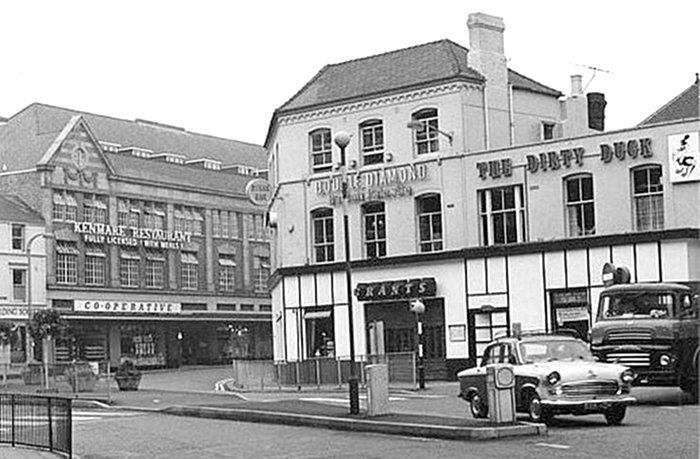
Another view of the
Dirty Duck. |
|

The Stork Hotel in the
early 1900s. From an old postcard. |
|
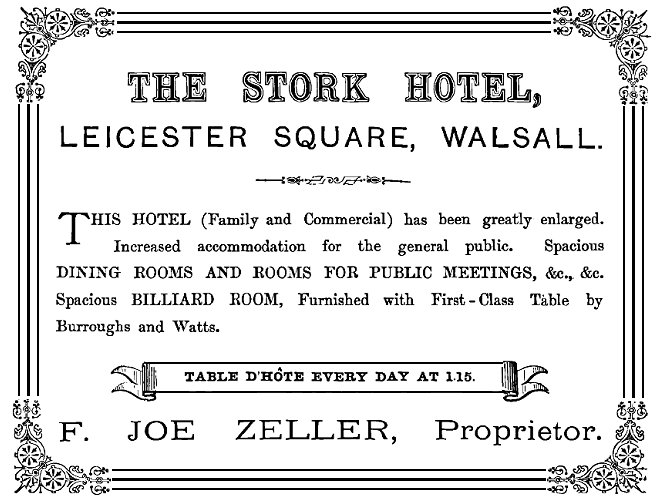
An advert from
1896. |
|
Four
views of The Imperial in Darwall Street (now
closed). |
|
|
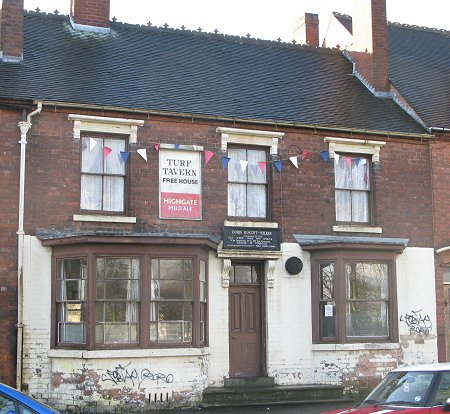
The Grade II listed Turf Tavern in
Wolverhampton Road, Bloxwich. |
The pub always has been, and still
continues to be part of community life. Most pubs are
now also restaurants, which cater for the young and
elderly alike. Large sums of money are spent on
converting traditional pubs into eating establishments,
which have become very popular.
Some of the town’s pubs are now
listed buildings, so their future is secure, even if
they are put to other uses. Grade II listed pubs
include:
The Rose & Crown in Birchills
Street.
The White Hart on Caldmore Green.
The Old Irish
Harp in Chester Road.
The Romping Cat in
Elmore Green.
The Black Country Arms in High Street. The
Royal Exchange, in Stafford Road, Bloxwich.
The Turf Tavern in
Wolverhampton Road, Bloxwich. |
|

Another view of the Turf Tavern in
Wolverhampton Road, Bloxwich. |
|
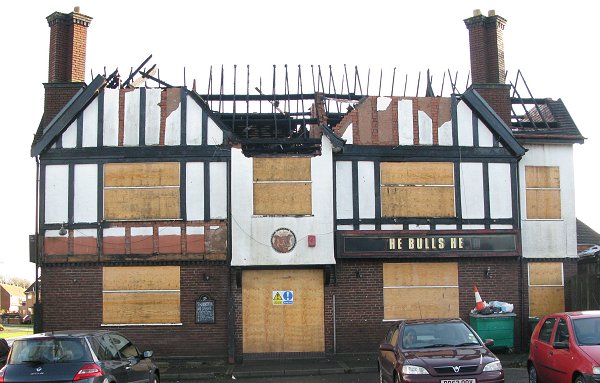
The derelict Bulls Head in Park
Road, Bloxwich. As seen in December 2012. |
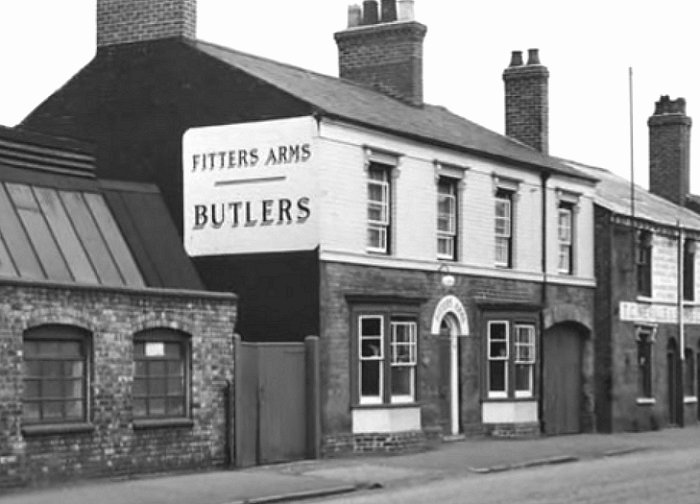
The Fitters Arms that was in
Hatherton Street. For many years it was home to the
Songsmiths Folk Club, run by Barrie Roberts, Steve
Parkes, and Jane Reynolds. |
|
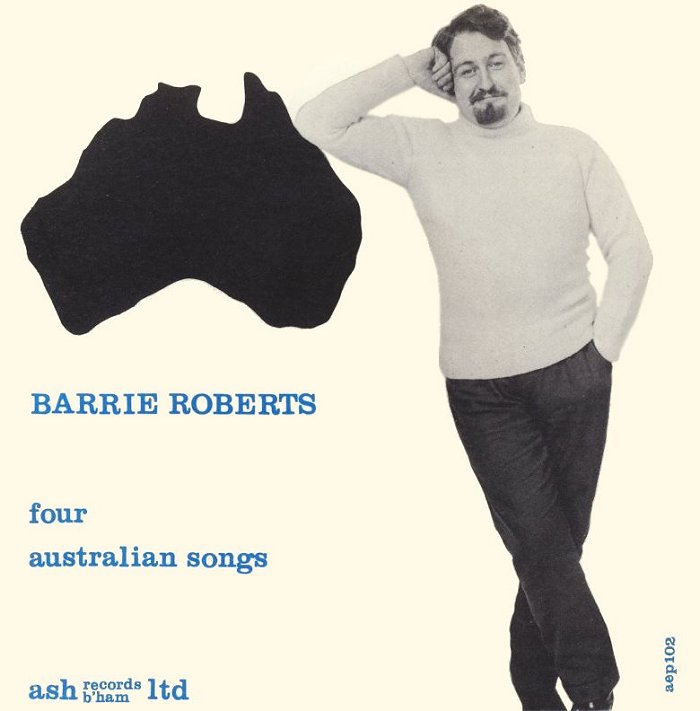
The sleeve of Barrie
Roberts' 7 inch e.p. |
|
The New Inn, which stood on the
corner of Green Lane and Hospital Street, Birchills, can
now be seen at Blists Hill Museum in Telford. Between
1981 and 1982 it was carefully dismantled and rebuilt as
number 11 High Street, Blists Hill.
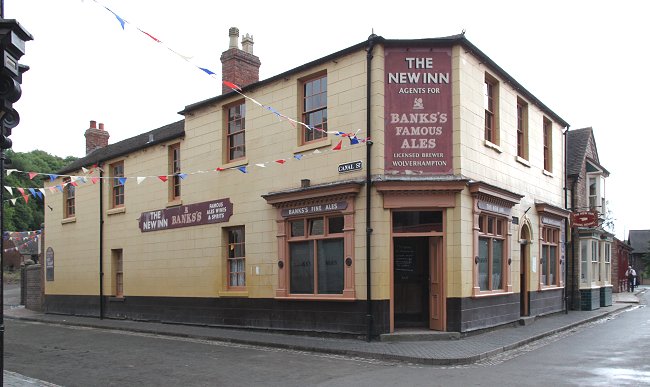
The New Inn at Blists Hill.
Luckily a number of the more
traditional pubs have survived, and are very profitable.
So hopefully they will still be a part of community life
for many years to come.
|
 |
|
 |
|
The
Prince in Stafford Street. |
|
The
Victoria in Lower Rushall Street. |
|
| The derelict Orange Tree in
Wolverhampton Street. As
seen in April 2013. |
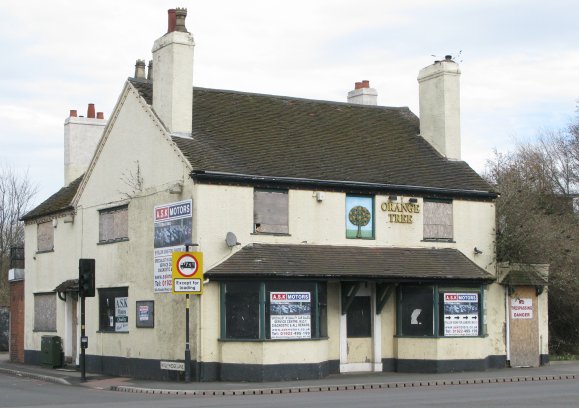 |
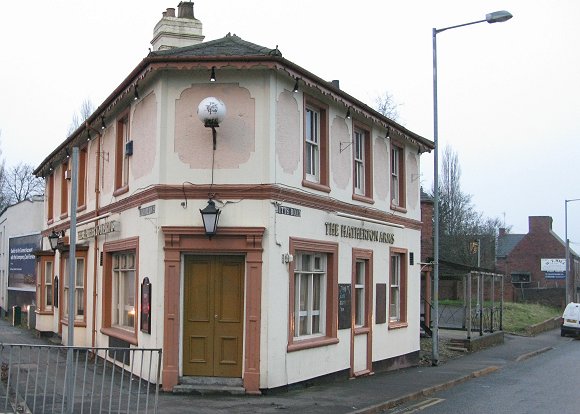 |
The derelict Hatherton Arms in
Lichfield Street. As seen
in February 2013. |
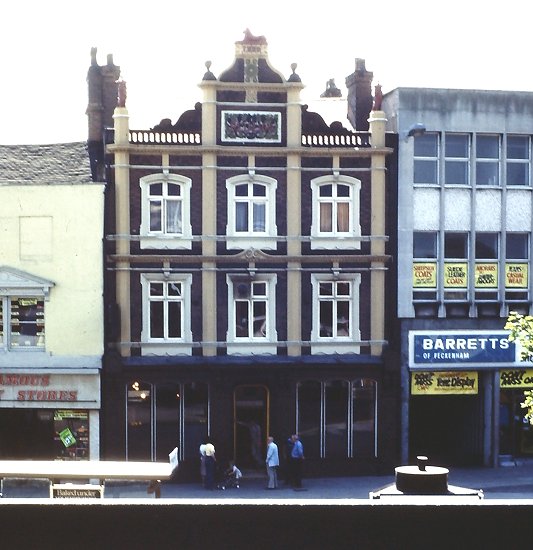
An old view of the Red Lion in
Park Street. Taken by Richard Ashmore, Courtesy of John & Christine
Ashmore. |
| The Royal Oak, Lord
Street, Palfrey |
| The Royal Oak in Lord Street closed its doors for
the last time some years ago and has been empty ever
since. In the 1920s it was owned by James Fletcher, and
after his death was auctioned at the Grand Hotel,
Birmingham on 28th November, 1928. The plan opposite is
from the sale catalogue. At the time the pub was
leased to W. Butler & Company Limited for an annual rent
of £100. The Licensee was Mr. Thomas Hawkins.
The ground floor consisted of an outdoor, a front
smoke room with a corner bar, a large back smoke room, a
sitting room, a kitchen, and a larder.
On the first floor was a club room and three
bedrooms. There were two brick-paved beer cellars with
brick stillaging.
The paved yard at the back contained a wash-house, a
coal place, and three toilets, with a pleasure green
behind. |
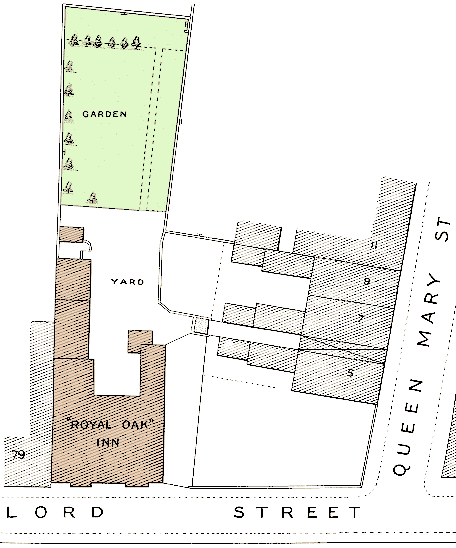 |
| |
|
| Read about Walsall's once
well-known brewery - Highgate Brewery |
 |
| |
|
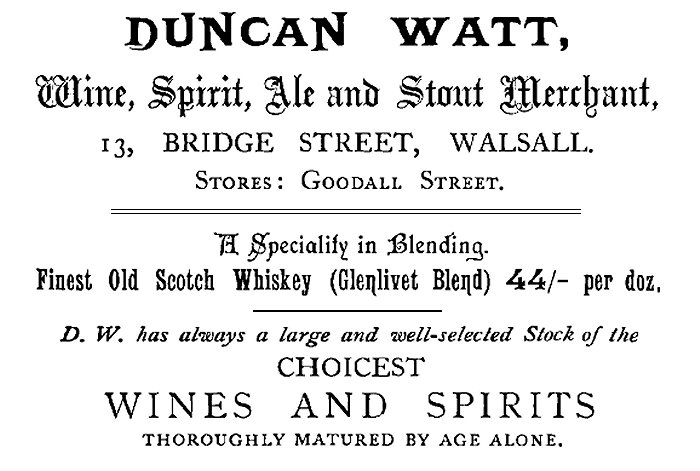
An advert from 1902.
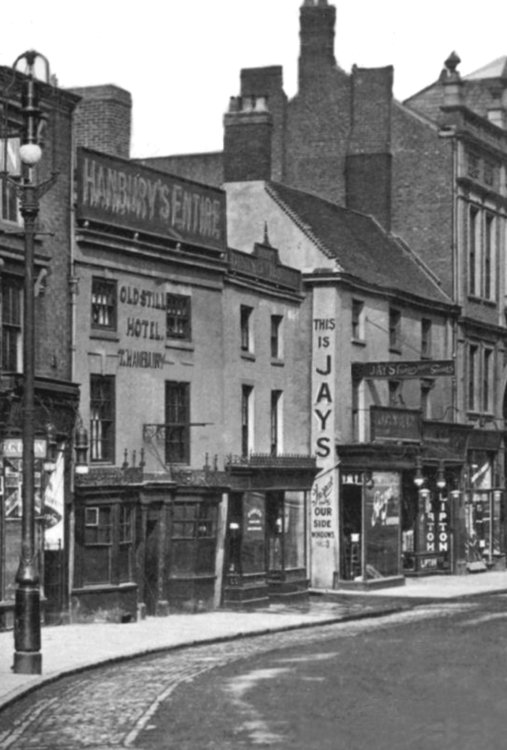
The Old Still at Digbeth. From an old
postcard.
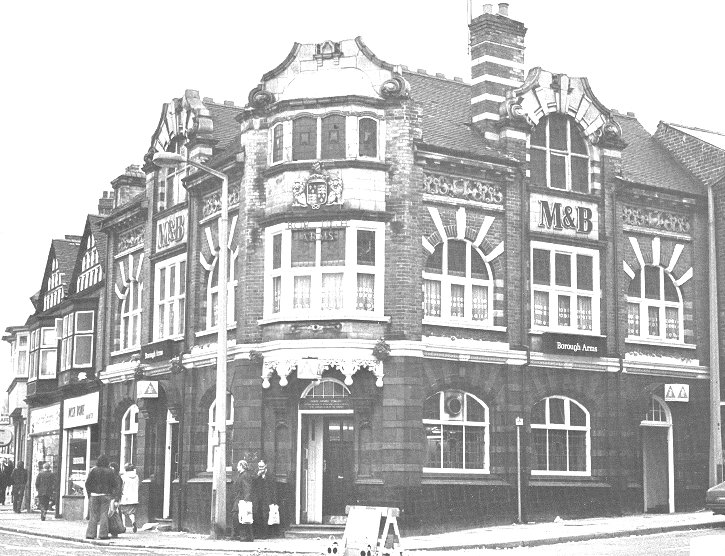
The Borough Arms in Ablewell Street, now Flan O'Briens.
 |
|
 |
|
 |
|
Return to Into The 20th Century |
|
Return to
the beginning |
|
Proceed
to
World War One |
|